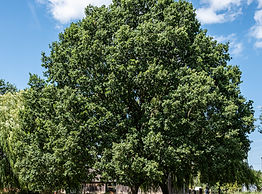Projects at FoHMP
Lorem ipsum dolor sit amet, consectetur adipiscing elit. Fusce et maximus justo. Sed nec rutrum augue. Ut vitae dui tempus tellus gravida facilisis. Phasellus convallis varius ipsum, non convallis tortor sagittis ut. Maecenas sollicitudin ut.

Trees and Shrubs found in the Copse

Hazel

English Oak

Holly

Elderflower

Cherry Laurel

Hawthorne
Tree and Planting evidence to support the origin of the Copse
We can find supporting evidence for the historical records from the trees and shrubs in the Copse itself, which ties in with the dates we are finding in the records as to when the Copse was created.
Tree ages
A common method used to estimate the age of an Oak tree is by measuring the circumference at a specific height (scientific study published by White, J 1998).
A specific type of oak tree in the Copse called a pedunculate oak ‘Quercus robur’, suggests an age of 210 years for this tree, meaning it started its growth around 1810.
Notable Tree
A specific tree is listed in the Woodland Trust Website.
Shrubs
Midland hawthorn is very common in the Copse and is strongly associated with ancient woodland. It is likely to have been present in the Copse area before 1800, possibly forming part of former field boundary hedges before the Copse was created, although Hazel is also used in hedgerows.
A report published in 1989 states ‘along the eastern margin grows what appears to be a very old hedgerow, now completely overgrown, and containing hazel trees 30cm in diameter,’ although sadly, only one of these old, coppiced hazel specimens remain.
This idea is supported by an account from the late 18th century, which is now dominated by fine oak trees and records show that the pigs of Headstone Farm were allowed to forage freely in this area eating acorns, therefore supporting this timeframe.
However, it is worth pointing out that mature oak and thorn trees indicates the former location, but this does not automatically imply that these trees or shrubs, other than the coppiced hazel, are survivors of 18th century hedgerows although may have been derived or replanted in these original locations.
On the main park website, there is an image page of trees found in other parts of the park